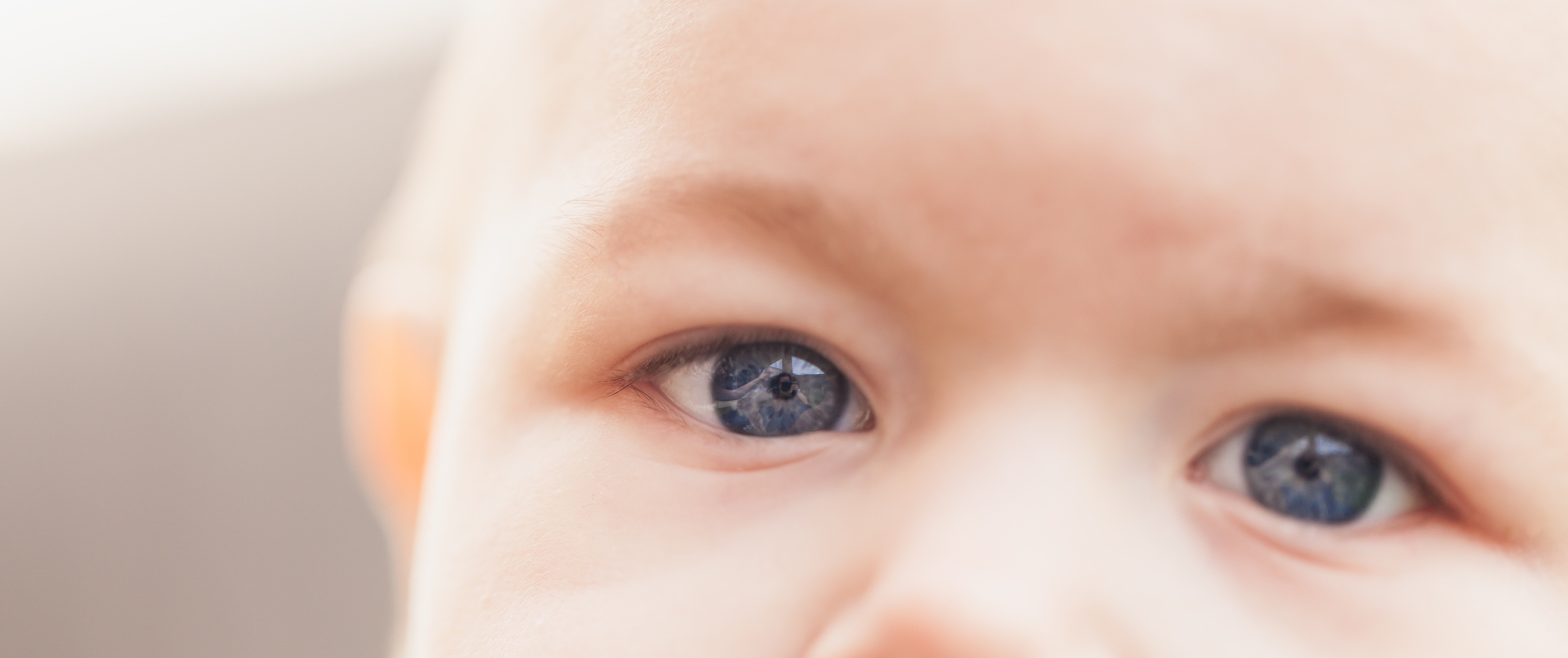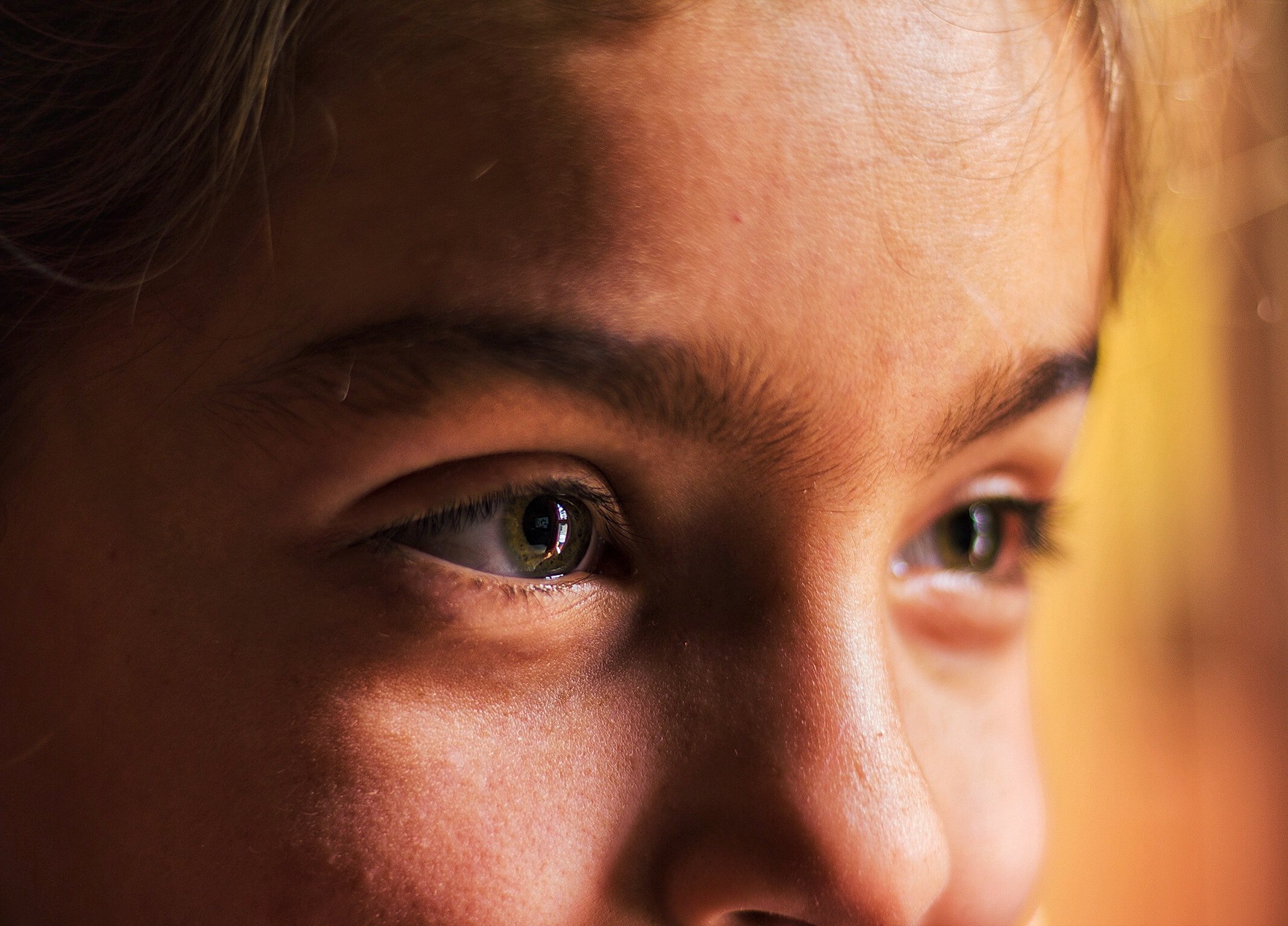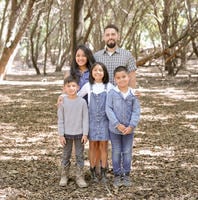August is Children’s Eye Health and Safety month. Nothing is as precious to our children or us than the incredible gift of vision. For the purposes of this article, I have broken down eye issues into the needs of infants, toddlers, and teens.
Infants
Over 80% of our learning is visually based. There are a few key areas in our infant’s vision that we need to make sure are working correctly in order for their vision to develop properly. Our eyes need to be used together as a team in order for them to function normally as an adult. Infants eyes must point straight ahead, be equally clear and have no obstructions or retinal issues preventing light from either entering the eye or being perceived. If any of these three areas are not present then a condition called Amblyopia (or lazy eye) can occur and the impacted eye will never develop as precise vision as the non-effected eye. Our brains combine the images from both eyes to create our perception of the world. Over the course of the first 8 years of life, the eyes lock in their individual abilities to see and lock in their ability to be used as a team for depth perception needs. When infant’s eyes are quite different in their prescription (one eye having a strong case of nearsightedness while the other does not) then their brain cannot combine one fuzzy image with a clear one to act as a team. If this is long standing then the fuzzy eye is ignored and never develops the ability to see well as an adult regardless of what prescription they have. This is also true if there is a problem with the retina of the eye or if there is an obstruction within the eye such as a congenital cataract that would prevent the retinal from receiving information clearly or from being able to process it. These issues are quite rare and are screened at birth. The final way an infant’s eyes can develop amblyopia is if one eye is straight and the other turns. When this happens the brain cannot combine images of two different items and is favors the image from the straight eye. The turned eye is then ignored and does not develop properly.
Red flags to watch for: With your infant, if they are looking at a favorite toy or object quickly place your thumb in the way of each eye. If the vision is normal they should ignore your thumb and keep looking at or continue playing with the object. If you cover one eye and they always turn their head to look around your thumb they may have decreased vision in that eye.
Infants should be screened by their optometrist to make sure these issues are not present, if there is a history of lazy eye in the family then infants should be screened around six months of age. If there is no family history of lazy eye then an exam sometime near their second birthday is fine. Should Amblyopia be detected the visual system is very responsive to treatment for this issue up to the age of 8. There is evidence that treatment is helpful after this age but the success of the outcomes drops off dramatically.
Infants can also be prone to pink eye and as such need to be seen by an optometrist should any discharge or redness of the white portion of the eye occur.

Toddlers to Teens
These are the years when the eye’s prescriptions can start to change. A good general rule of thumb is that as our children are growing the fastest their eyes are also changing the fastest. Our eyes use two lenses to see. Our front lens (the cornea) is a lens we use for our distance vision and it has one single power to do this. We also have a lens inside the eye we use to read with and that lens adds power to the system to enable us to see up close. Luckily most children are born slightly farsighted. This means that their cornea is a bit too weak to see far away clearly so the internal lens makes up the difference and the vision is fine. As our kids grow their eyes get stronger. Since most kids start off a bit too weak they actually grow into their vision. Children develop nearsightedness when they continue to get stronger beyond that point and can no longer see far objects clearly. Hence the growth years are crucial to have their vision monitored to make sure that they can still see well for all their needs. Should their vision drop enough where correction is necessary then glasses should be prescribed. These glasses should be made out of unbreakable materials that also protect against UV light exposure. Contact lenses in toddlers and preteens should be done only in exceptional cases due to the possible health issues of contact lens wear in someone so young.
Red flags to watch for: For toddlers watch to see if they lose interest in objects as they move away from them. Ask them if they can see a plane in the sky, etc. If they cannot they may have an issue.
These are the years for parents to watch their kids closely and not be afraid to have their children’s eyes checked if they ever complain of their vision or seem not to be seeing as well as they should. Many parents do not have their kids checked due to a myth that the use of glasses makes your eyes worse. This is not and has never been true. Vision issue comes from DNA and not from glasses use!

Teens and Beyond
The teen years bring in new challenges since it is at this age kids become more image conscious. Most teens want to switch from using glasses to using contact lenses at this time for cosmetic purposes. Contact lenses are being fit at earlier ages now with the advent of disposable contact lenses that minimize the risk of infections from old, dirty lenses. Almost all eye prescriptions can be fit with contact lenses including nearsightedness, farsightedness, and astigmatism. Teens should only use disposable lenses either on a monthly, two week or daily basis. Young adults with good cleaning habits and maturity are perfectly safe to use a monthly contact lens. However, two week disposable or daily disposable lenses are available if a teen is not found responsible enough to care properly for their lenses. Wearing a lens extended wear (sleeping overnight with their lenses on) should be treated as an exception and not the rule when it comes to contact lens wear. While there is no doubt that it is more convenient to sleep in a contact lens without taking it out there is also no doubt that it is not a safe habit to engage in over the long haul. Extended lens wear and poor hygiene with contact lenses account for the vast majority of all contact lens induced infections. Some of these infections can be mild but some can be quite serious and sight threatening. Finally, all teens should be wearing contact lenses that protect against UV light damage or wear UV protective sunglasses over their contacts.
Red flags to watch for: Be sneaky. Check their contact lens case at night to make sure they have placed their contacts into it. If they wear dailies count the number of lenses at the beginning of a week and see if they have the appropriate number later that week. Spy on them- that's your job as a concerned parent!
In conclusion, we often forget what a wonderful blessing our gift of sight is to all of us. Our vision opens our world to the colors, pageantry, and beauty this world has to offer. Luckily it takes very little to safely monitor and maintain our gift of vision. Never hesitate to contact your optometrist if you have any questions or concerns about yours or your child’s vision.
Robert Melrose, O.D., F.A.A.O.
Brookside Optometric Group
Dr. Bob Melrose is a partner in the Brookside Optometric Group in Stockton CA. The Brookside Optometric Group is the largest independent practice in the state. The practice has 14 optometrists to serve you. They carry over 1500 frames to choose from to meet any style need. They have access to all brands of contact lenses available to meet your vision concerns. They also have experience in the management of over 30,000 cases of laser vision correction. Many of the doctors at the Brookside Optometric Group have taught at the UC Berkeley School of Optometry with a combined experience of over 60 years of teaching. The office is opened 6 days a week including Saturdays and evenings.
To learn more about the Brookside Optometric Group please see their web site at
or on Facebook at www.facebook.com/brooksideoptometric



